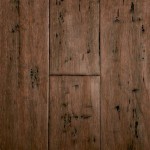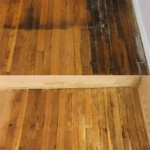Essential Aspects of Faux Wood Flooring Tile
Faux wood flooring tile has become a popular choice for homeowners who desire the elegant look of hardwood floors without the hefty price tag and maintenance requirements. This versatile flooring option offers durability, water resistance, and endless design possibilities. In this article, we will delve into the essential aspects of faux wood flooring tile, exploring its benefits, considerations, and installation tips.
Benefits of Faux Wood Flooring Tile
Durability: Faux wood flooring tile is highly durable, withstanding heavy foot traffic and everyday wear and tear. Its robust construction ensures longevity and resistance to scratches, dents, and fading.
Water Resistance: Unlike natural hardwood, faux wood flooring tile is water-resistant, making it an ideal choice for areas prone to moisture, such as kitchens, bathrooms, and basements. Its impervious surface prevents moisture absorption, reducing the risk of warping or buckling.
Design Versatility: Faux wood flooring tile comes in a wide range of colors, textures, and finishes, offering endless design possibilities. From classic oak to modern walnut, you can find a style that complements your interior decor.
Easy Maintenance: Maintaining faux wood flooring tile is a breeze. Regular sweeping or vacuuming removes dirt and dust. For deeper cleaning, use a damp mop with a mild detergent. Avoid using harsh chemicals or abrasive cleaners.
Considerations Before Installation
Subfloor Preparation: Proper subfloor preparation is crucial for a successful faux wood flooring tile installation. Ensure your subfloor is level, dry, and free from any debris or irregularities. Installing an underlayment can provide added cushioning and moisture protection.
Tile Size and Pattern: Faux wood flooring tile comes in various sizes and patterns. Consider the size of your room and the desired look before selecting the tiles. Plank tiles mimic the appearance of traditional hardwood planks, while square tiles offer a more contemporary aesthetic.
Installation Method: Faux wood flooring tile can be installed using glue-down, floating, or nail-down methods. The appropriate method depends on the type of tile and the subfloor material. Consult a professional installer for guidance on the best installation method for your specific application.
Installation Tips
Start from the Center: Begin laying the tiles from the center of the room outwards. This ensures symmetrical alignment and prevents the appearance of uneven edges.
Stagger the Joints: Staggering the tile joints creates a more natural and visually appealing look. Avoid aligning the joints in a straight line.
Use Spacers: Use tile spacers to maintain uniform spacing between the tiles. This prevents overcrowding and ensures a professional finish.
Trim the Tiles: For areas where whole tiles cannot be used, carefully trim them to fit using a tile saw or utility knife.
Allow Time to Cure: After installation, allow the adhesive or mortar to cure according to the manufacturer's instructions before walking on the floor. This ensures a secure and long-lasting installation.
By considering these essential aspects and following the recommended installation tips, you can achieve a beautiful and durable faux wood flooring tile installation that will enhance the aesthetic appeal of your home for years to come.
Wood Effect Tiles That Look Like

Our Flooring Solid Wood Vs Faux Tile Chris Loves Julia

Wood Look Tile Ceramic Porcelain The

Wood Effect Tiles That Look Like

Tips For Achieving Realistic Faux Wood Tile Chris Loves Julia

How To Choose The Right Wood Look Tile Color Arizona

The Best Fake Wood Flooring 4 Faux Floor Ideas Inc

Wood Look Tile Ceramic Porcelain The

Faux Wood Tile The After Photos Chris Loves Julia Tiles Ceramic Floor Floors

Wood Effect Tiles That Look Like
Related Posts








